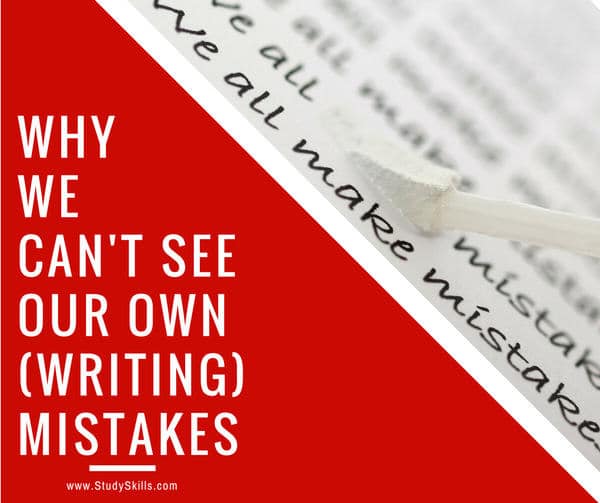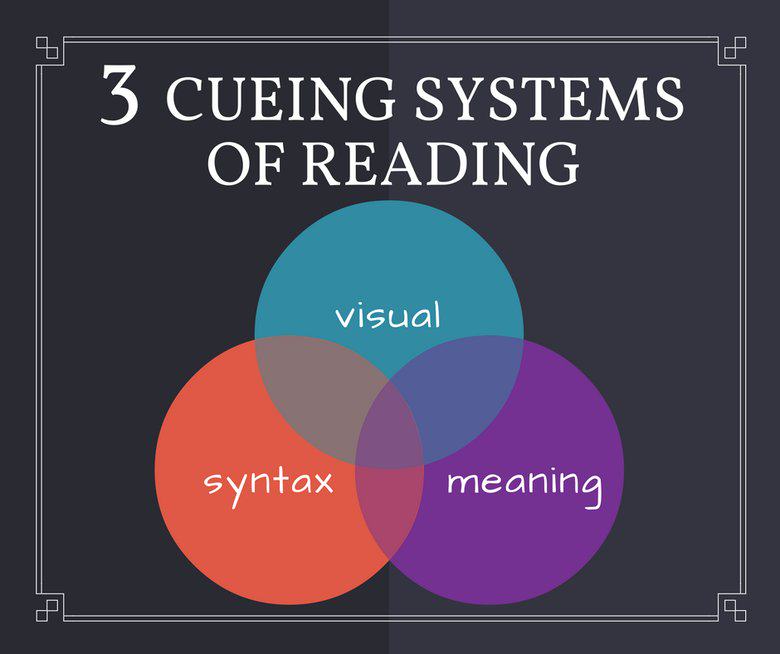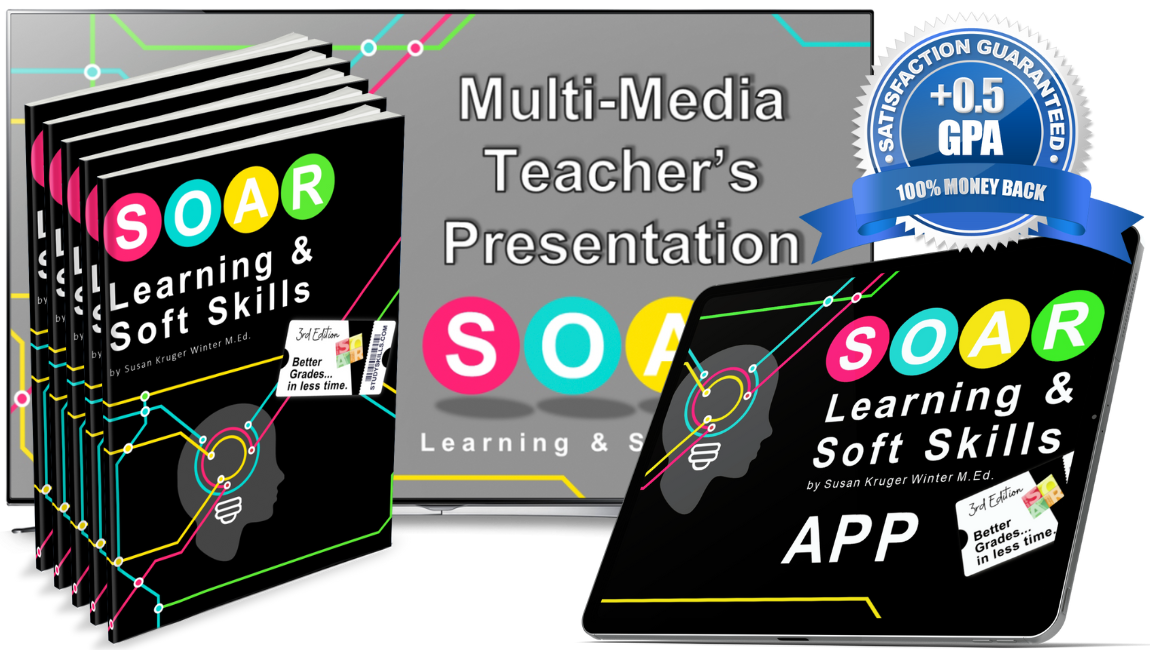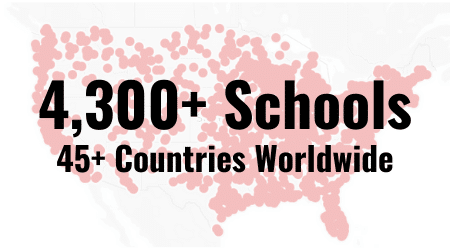Why We Can’t See Our Own (Writing) Mistakes
Just a few weeks ago, we ordered some new return address labels. See anything wrong?

About 100 went out before we caught the mistake. Oops!
And, every so often, we publish an email or blog post with a typo or two. Oops!
In our company, we all live and breathe the content we publish. Every single member of our team collaborates to develop our content. (See more about our writing method here.)
But, often, we can’t see our own mistakes. Why?
Because the more familiar our brains are with the content in print, the less we are able to focus on details. It’s how our brains are designed to work. We often cannot see our own writing mistakes.
The Three Cueing Systems of Reading
When we read, our brains use three different cueing systems –all at the same time– to process text.
These cueing systems are called:
- Visual. This cueing system includes the letters in the text.
- Syntax. This cueing system is the order of words in a sentence. (Think “Mad Libs®.”)
- Meaning. This cueing system is the overall meaning of the text. It includes the context of what the topic is about and other information included with the text.
Which Cueing System Do You Think We Use Most Often?
When I ask teachers this question during live workshops, 80% choose the “visual” cueing system. After all, if we can’t SEE the letters, then how would we know what the text says?
They have a sound argument. But, our brains are far more savvy than we realize. For example:
I cdnuolt blveiee taht I cluod aulaclty uesdnatnrd waht I was rdgnieg. It is the phaonmneal pweor of the hmuan mnid! Aoccdrnig to rscheearch at Cmabrigde Uinervtisy, it deosn’t mttaer in what order the ltteers in a wrod are, the olny iprmoatnt tihng is taht the frist and lsat ltteer be in the rghit pclae. The rset can be a taotl mses and you can sitll raed it wouthit a porbelm. Tihs is bcuseae the huamn mnid deos not raed ervey lteter by istlef, but the wrod as a wlohe. Amzanig, huh???
Many times, people read the above text fluently before they notice that almost every word is misspelled. This example proves that we don’t rely on the visual cueing system as much as we think!
The Brain: The Original “Energy Star” Machine
Our brain is an electrical organ, filled with billions of neuron wires. Those neuron wires run on electrical power, fueled by brain chemicals.
The section of the brain that translates letters (the “visual cueing system”) is called the “working memory.” It is part of our short-term memory and is located in the front of the brain.
The Front Brain uses MUCH MORE brain power than the Back Brain, where the other two cueing systems are located. To conserve power, our brains automatically default to using the “syntax” and “meaning” cueing systems as often as possible.
When we use phrases like “improving fluency” or “building automaticity” to describe a student’s growing reading skills, we are referring to their increased ability to use the “syntax” and “meaning” cueing systems. In these phases of reading development, the brain is working to transfer most of the workload to the back of the brain.
The Back Brain is far more energy-efficient than the Front Brain. Our brains have naturally been conserving energy for thousands of years before it was fashionable to do so!
When the “syntax” and “meaning” cueing systems lead the reading process, the visual cueing system does minimal work. This natural process explains why we can reread something several times and not notice typos that will be obvious to others. We have very little control over which parts of the brain are activated when we read.
“Typos” Get a Bad Rap
Obviously, no one wants to fill their writing with typos. However, there is a common notion that a typo is a reflection of “poor quality” or “lack of effort.”
In reality, an occasional typo is actually a sign of deeper understanding and familiarity with the text. There is a biological reason why we can’t see our own writing mistakes.
Thank You for Your Help
At SOAR, we invest the time and effort to publish our OWN meaningful, relevant, and useful content. We have nearly 1,000 pages on our website, alone. Our books and software have 10x that volume of content.
And yet, we don’t “outsource” our writing to people in foreign countries, just to boost our search engine rankings. Every member of our team is involved in developing our content… together. (See details here.)
We invest this time because we feel it is important to provide you with real value. We don’t appreciate people wasting our time with junk content. We refuse to do that to you.
But, that also means we’ll have an occasional typo. It doesn’t mean we don’t care about the quality of our work.
On the contrary!
It means we care so much, our brains see the meaning and context of what we publish far more than we see the key strokes that communicate our message. We try to catch our typos before you do. But, we don’t catch them all. We appreciate your help and patience with alerting us to these errors and we take care to fix them right away!
Many thanks,
Susan Kruger Winter, M.Ed.
CEO & Founder of SOAR Learning, Inc.
Six Steps to
Conquer the Chaos
Get Our Free Guide & Information on...

"*" indicates required fields
SOAR® in the News
The SOAR® Curriculum
The most critical learning, organizing, and communication skills needed for school. Learn more here.
Who’s Using SOAR®?
SOAR® Guarantee
Click here to learn more.







